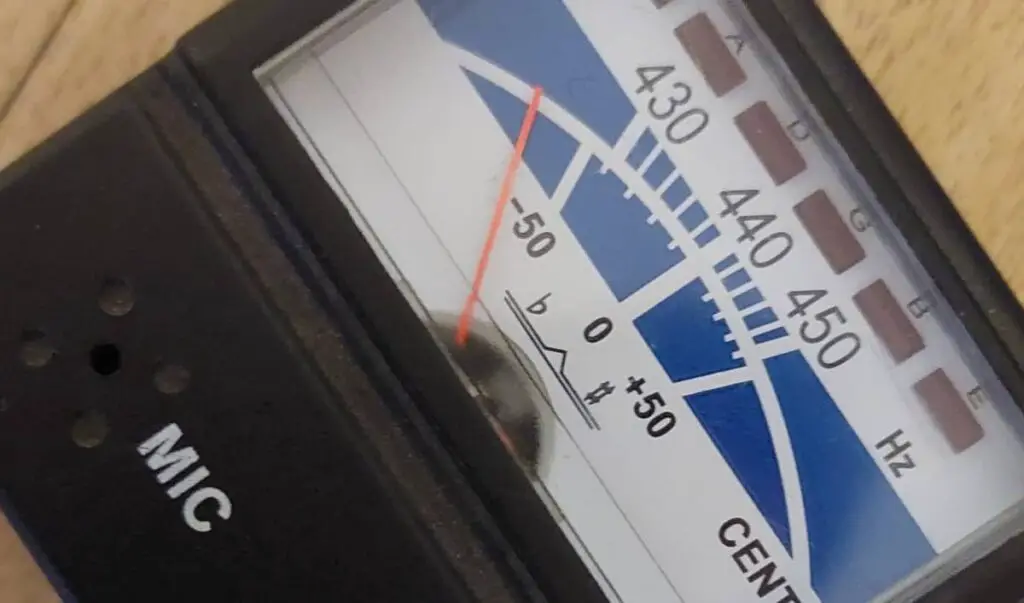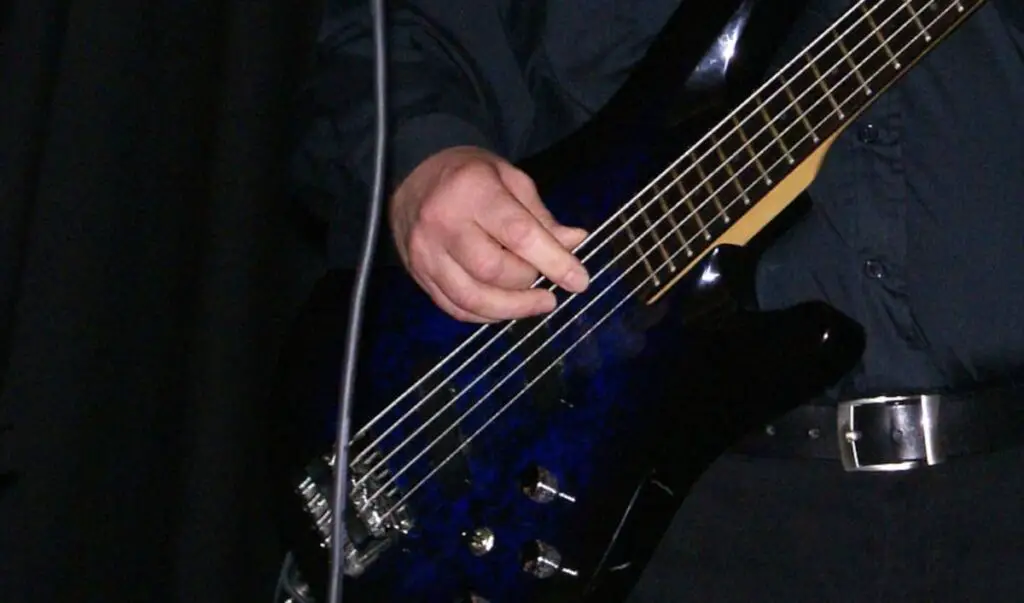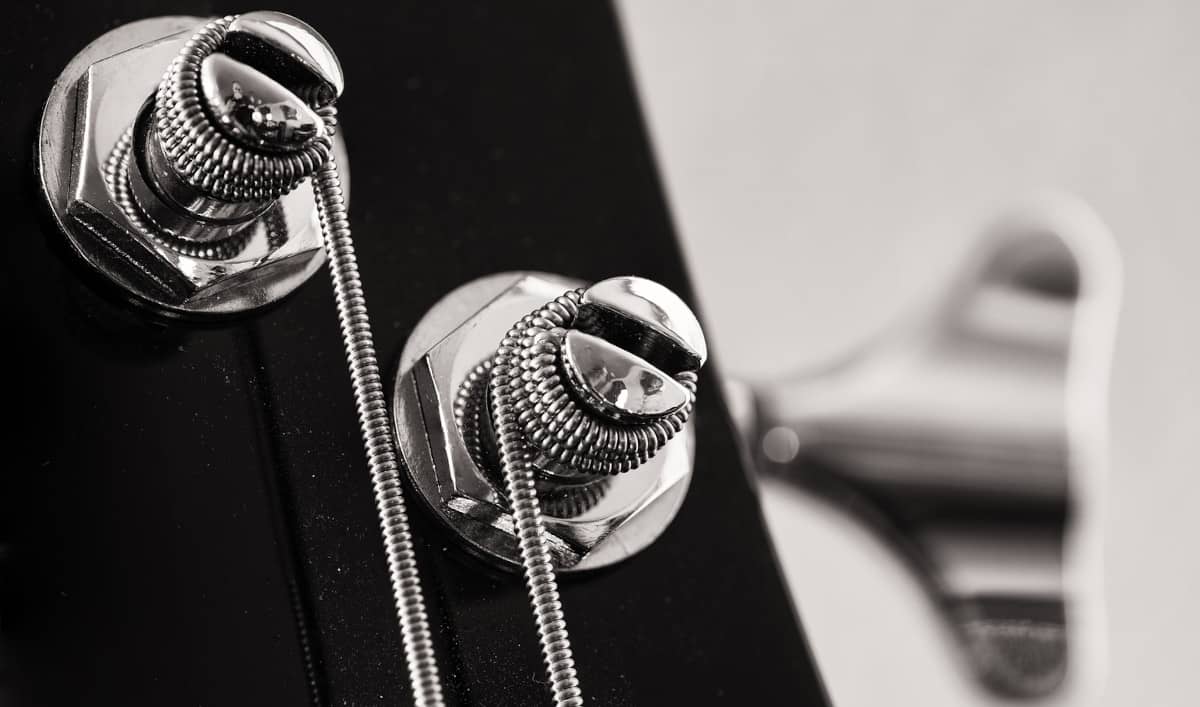There are many good reasons to tune down a bass to C Standard. It allows you to get a deeper, heavier, and more powerful sound and makes you stand out in the sea of bassists that stick to E. But given that there are so many different tunings to choose from, why choose C Standard in particular?
After playing in various metal bands, I’ve used a lot of different tunings, including C. I loved it because it allowed for a heavy sound that didn’t sound excessively deep. The fact that it was a standard tuning also made it easy to apply what I knew about the fretboard from playing in E.
However, I also made some mistakes in how I approached the tuning. Because I have learned things the hard way I decided to write this article to tell you everything there is to know about C standard. This way you won’t have to make the same mistakes I did.
You will learn how to tune to it and when it’s a good idea to do so. You will also learn about when C standard is preferable to Drop C, and what you need to do to your bass in order for it to withstand the new tuning.
C Standard Bass tuner
Below is a tuner that you can use to tune your 4 or 5-string bass to C Standard. Use it by mtaching the pitch of the tuner to that of your strings, moving from the thickest string to the thinest.
If you are unfamiliar with playing in C and setting up your bass I recommend reading the rest of this article before tuning down.
What is C standard tuning on the bass?
In C standard, the bass is tuned 2 whole steps down from E standard. For a 4-string bass, the strings are tuned to C-F-A#-D#. 5-string basses in C standard are tuned C-F-A#-D#-G#, or alternatively G-C-F-A#-D#.
In all standard tunings, the strings are tuned perfect fourths a part. Thus, if you play a riff the exact same way in E standard and C standard, the riff will be the same but in a different key.
Therefore, tuning your bass to C standard is a great way to achieve a deeper and heavier sound, while retaining your muscle memory and knowledge of the fretboard.
It is common for both the guitarists and bassists to tune to the same tuning, and there are several reasons why bands select C standard in particular:
- Heavy Sound – Tuned-down instruments are most common in metal music. C standard in particular is common in death metal, melodic death metal, and groove metal. The low C strings allow the axe players to create a heavy, distorted wall of sound to a higher extent than in E standard. Heavy bands with melodic elements also utilize it to create a contrast between heavy rhythms and beautiful melodies.
- Standing out – The vast majority of basslines are written in E standard tuning. Playing in C thus instantly makes your playing stand out, and avoids the cliche of writing too many songs in E and A.
- Middle ground – For some bands, it’s all about sounding as heavy as possible. Some bands solve this by tuning all the way down to drop G, while others stay in E and make the most of it. C Standard is a great middle ground between these two options. The tuning can produce a heavy down-tuned sound, without having to tune the bass as low as humanly possible.
- Vocal range – If a vocalist has a deep voice, string instruments can be tuned down to suit their vocal range better. This will make it easier for the vocalist to reach notes and utilize the parts of their range where they sound the best. However, C Standard is rarely used for this purpose.

Set up for C Standard
When switching tuning, your bass will respond to the tension of it in various ways. Here are the most noteworthy things to be mindful of:
- Strings – If you are playing with a set of strings intended for E standard, I highly recommend switching to a heavier string gauge. Not doing so will result in thin-sounding sloppy strings that will be uncomfortable to fret. They will also not be able to produce the powerful tone you are looking for.
- Nut – If the nut on your bass is too shallow, it might need to get refitted to accommodate the thicker strings. Alternatively, you can switch it out with one that is better suited for thicker strings.
- Neck relief – A lower tuning results in less tension on your strings. As a result, you might need to slacken the truss rod on your bass, in order for the neck to not overcorrect itself.
- Action – The action on your bass will in all likelihood end up a bit higher when you tune to C. The strings will be thicker and floppier and thus you will need higher action in order to avoid fret buzz.
- Staying tuned – You will find yourself having to tune the bass more often once you tune down. The need for this will decrease over time.
Most of this mainly applies if you intend to keep your bass in C. You can still tune your bass to C occasionally and then back to E again without having to worry about neck relief.
However, strings that are intended for E will be incredibly loose in C. Thus, they will produce a weaker sound, and fretting them will feel sloppy.
As switching to a thicker set of string impacts the tension, neck relief and nut on your bass, it is a best practice to set up the bass.
It is perfectly possible to set the bass up for C on your own. However, if you are unfamiliar with the process and feel uncomfortable with it, you can also take your bass to a luthier for help with the setup. The average cost of a bass setup is $63.18 without new strings, and $79.54 with new strings.
What bands use C standard tuning?
C Standard has the potential for sounding incredibly heavy. Thus, this tuning is most commonly used by metal bands. As you will see below, it is also occasionally used by rock bands.
If you are looking to find bands that play in C standard, you should be critical of online tablatures. A lot of fanmade tabs across the web have misinformation in them. Errors will be even more prevalent when introducing alternative tunings, and the potential of confusing C standard and Drop C.
Here are 10 bands that have utilized C standard, and a couple of songs that they did so on:
| Band | C standard usage | Notable songs in C standard |
| Black Dahlia Murder | Main tuning | Statutory Ape, Deathmask Divine |
| In Flames | Main tuning until Colony | The Jester Race, Moonshield |
| Queens of the Stone Age | Occasional | No One Knows, The Lost Art of Keeping A Secret |
| Arch Enemy | Main Tuning | Burning Angel, Enemy Within |
| Dethklok | Main tuning | Awaken Mustakrakish, Thunderhorse |
| Alestorm | Commonly used | Shipwrecked, Keelhauled |
| Sepultura | Occasional | Antichrist, Necromancer |
| Smashing Pumpkins | Occasional | Lucky 13, Heavy Metal Machine |
| Electric Wizard | Occasional | Barbarian, Satanic Rites Of Dragula |
| Immolation | Main tuning | Into Everlasting Fire, Despondent Souls |
What strings should I use for C standard tuning?
If you are looking to get a heavy sound out of a 4-string bass in C standard you should use strings that are approximately .130-.100-.80-.65. Depending on the sound you are looking for it is possible to use thinner strings, especially for the low C string.
String manufacturer Ernie Ball, recommends .110 for the low C string. While this will work, it’s definitely on the lighter side for what is common to use in C.
It is not uncommon to use a 5-string set and throw away the thin G string when tuning a 4-string bass to C. In a 5-string set, the low B string is usually between .125 and .135. A heavier gauge means that there is more mass that will vibrate, resulting in a more resonant and powerful tone.
However, a heavier gauge also means that playing the bass will be more demanding on your hands. Think of how much more demanding the bass is on your hands than the guitar. Switching to a heavier string gauge has the same effect. It will require more stamina and can make it more demanding to play fast.
What type of strings you should use depends on what type of tone you are looking for:
- Roundwound – Roundwound strings provide an aggressive and bright tone. I find the sound to be fitting for metal, and a safe choice if you are unsure about exactly what you are looking for, but want to sound heavy.
- Nickelwound – Nickelwounds give your tone a more pronounced mid-range. As a result, heavy riffs in C standard will sound similar to that of 80s thrash metal bands.
- Flatwound – Flatwounds give a mellow and clean sound, even in C. It’s by no means incorrect to use flat-wounds in C standard tuning. However, it is an unconventional choice if you are looking to play heavy music.
With that said, I Recommend this round-wound .130-.100-.80-.65 set by Rotosound. If you are tuning to C standard to sound heavy, these strings are going to help you achieve just that.

C standard tuning for 5-string basses
5-string basses with a low string are generally tuned a half step up to C-F-A#-D#-G# in C Standard. It is possible to tune down to G-C-F-A#-D#, but getting a good sound out of the low G string is demanding for your bass and your gear.
A misconception about C Standard on the 5-string is that the lowest string has to be tuned to G. While it’s possible to do so, you will need a string that is approximately .165 to get a good sound out of it. Thus, unless your bass is specifically built for deep tunings and you have a proper amp to handle frequencies this low, it will not sound good and could damage both your gear and your bass.
Thus, the best way to tune to C standard on a 5-string is generally C-F#-A#-D#-G#. This tuning is a half-step up from E-standard, instead of down or 2 whole steps down like on the 4-string.
Bear in mind that a 5-string in E has an additional half-step of deep range and one half-step less high range than one turned to C. Thus unless you need to play riffs that utilize an open C string, you could consider not changing your tuning at all.
C standard vs Drop C tuning
While every string is tuned down 2 whole steps in C standard, Drop C only tunes down the lowest string 2 whole steps. The rest of the strings are only tuned down 1 whole step. A 4-string bass tuned in Drop C is tuned C-G-C-F, as opposed to the standard C tuning of C-F-A#-D#
As I showcased in my guide to D standard, there are pros and cons to both drop and standard tunings.
In C standard, the intervals between your strings are the same as in E standard. Thus, if you are used to playing in E standard, your muscle memory and knowledge of the fretboard and harmony can be applied in C standard as well.
Drop C is convenient for guitar players because it allows them to play power chords with 1 finger rather than 2. Here is an example of the same chord progression played in C standard and Drop C:

While Drop C requires you to recalibrate the way you think about your fretboard, it is generally a good idea to tune to it if you are working with guitarists who are playing in Drop C.
This is because it will be easier to work together and share riffs. Furthermore, riffs can be difficult to play in standard tuning if they were written for a drop tuning.
Thus, Drop C is generally preferable if the rest of your band is using the tuning, or you are looking to cover or emulate artists that use it. Otherwise, I would personally tune to C standard due to standard tunings making it easier for me to both play the bass and write music on it.
Conclusion
C Standard is a great tuning for heavier genres for a multitude of reasons. It achieves a heavy sound without tuning excessively low. The fact that it is a standard tuning makes it easy to apply your existing knowledge from playing in E. It also makes it easier to not sound like every other band out there.
Setting the bass up for C requires you to be mindful of string gauges, neck relief, the nut, and the action. It is best to take your bass to a shop if you are unfamiliar with this process. Alternatively, you can get help from another bassist who has done it themselves.
C is a common tuning in death metal and melodic sub-genres. Some rock bands have also used C to some extent, and it’s a fitting choice for any band that is looking for a heavy and deep sound.
Drop C is used by guitarists to make power chords easier to play and in order to write heavy riffs. You can generally still play in C standard if your band plays in drop C. However, this can make some riffs harder to play. It is also harder to adapt riffs from guitars to bass and vice versa. Therefore, I find it best to stick to the same tuning as a band.
In heavier genres, the same question always comes up. Should you play a 4-string or a 5-string bass? For an actual answer to the question, read my article on whether you need a 5-string bass in metal.

